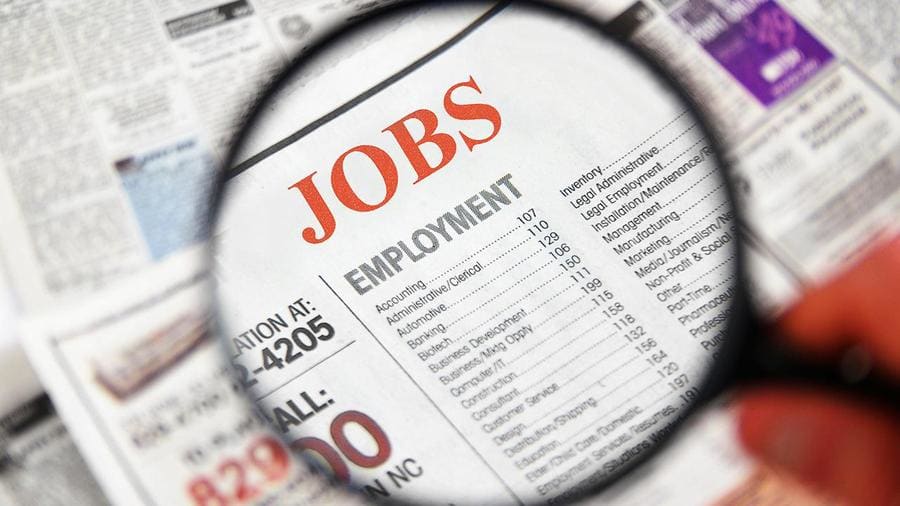
The Federal Reserve's inflation fight suffered yet another setback on Thursday, as more evidence of a hot jobs market could fuel further wage increases and trigger bets on more aggressive interest-rate hikes in coming months.
Labor Department data indicated applications for new jobless benefits fell by 2,000 to 190,000 over the period ended Feb. 25, a third consecutive weekly decline and the seventh consecutive tally under 200,000,
The figures continue to defy job-cut headlines across some of the economy's most important sectors.
Ian Shepherdson of Pantheon Macroeconomics suggests, however, that the recent range for weekly-jobless-claims numbers suggests that they've reached a trough. They could quickly move higher over the coming weeks, he argues, given the lag time between headline job cuts and their impact on filings.
"The lag arises because firms tend to announce layoffs all at once but then implement the cuts over a few months, and also because people receiving severance pay in some states -- notably California -- cannot make an unemployment insurance claim," he said. "The likely future direction of travel for claims is clear."
The weekly claims figures followed a detailed update on so-called unit labor costs for U.S. companies over the three months ended in December. Those costs surged 3.2% and 6.5% for all of 2022, even as overall productivity rates were revised lower.
That suggests employers are paying workers more for less output, a worrying condition that could suggest further wage-and-price spirals that aren't offset by improving economic growth. And that's a concern Federal Reserve Chairman Jerome Powell noted late last year.
Productivity Is Key to Wage Impact
"It’s not that we don’t want wage increases. We want strong wage increases. We just want them to be at a level that’s consistent with 2% inflation," Powell told reporters at the Fed's post-meeting news conference on Dec. 14.
"Right now, if you factor in standard productivity estimates, wages are running well above what would be consistent with 2% inflation."
That was also evidenced in the so-called prices-paid index of the closely watched ISM manufacturing activity survey, published on Wednesday. The benchmark jumped six points last month to 51.3, even as the overall reading indicated a fifth consecutive month of contraction.
The Thursday data were quickly digested by the bond market -- which is acutely attuned to changes in inflation prospects and no doubt influenced by faster-than-expected readings from Europe earlier in the session. The 30-year Treasury yields topped 4% for the first time since early November.
Following last night's jump in 10-year notes, the entire Treasury curve -- from 1 month bills to 30-year bonds -- is now trading north of 4%, a move that provides a host of alternatives for investors looking at stalled, or potentially lower, equity-market returns over the coming year.
And with two-year yields testing fresh October 2008 highs of 4.923% in early New York trading, bonds are likely to act as a significant headwind for stocks over the coming weeks as investors look to the Federal Reserve's March policy meeting
The leap higher in yields has also lifted bets on both the chances of a 50-basis-point (0.5-percentage point) rate hike from the Fed at its next policy meeting later this month in Washington and the prospect of a federal-funds rate that could top 5.5% by the middle of July.
Fed Rate Bets Accelerate
The CME Group's FedWatch is now pricing in a 42.1% chance that the Fed will raise rates by 25 basis points in July -- following hikes in March, May and June -- a wager no traders were willing to make at the beginning of February.
"Another week of jobless claims declining and coming in below expectations suggests the labor market continues to withstand the aggressive rate hikes and will keep the Fed on their tightening path," said Mike Loewengart, head of model portfolio construction at Morgan Stanley Global Investment Office.
"Next week’s jobs data will give us a better picture but concerns over a robust labor market leading to more inflationary pressure likely remain," he added.
"The Fed has been adamant that it won’t be backing off until prices are tamed, and after last month’s inflation hiccups, investors should prepare for more market uncertainty."
Capital Economics is suggesting February payrolls, which will be published on Friday, March 10, will show a net increase of 200,000 new jobs, down from the blowout 517,000 tally recorded in January.
But the firm cautioned that "given the potential impact of weather and seasonality effects ... there is the possibility of another shock last month, albeit mainly to the downside this time."







